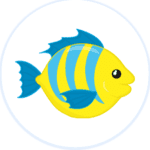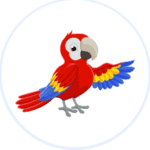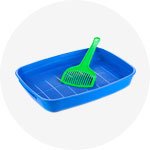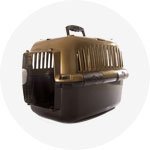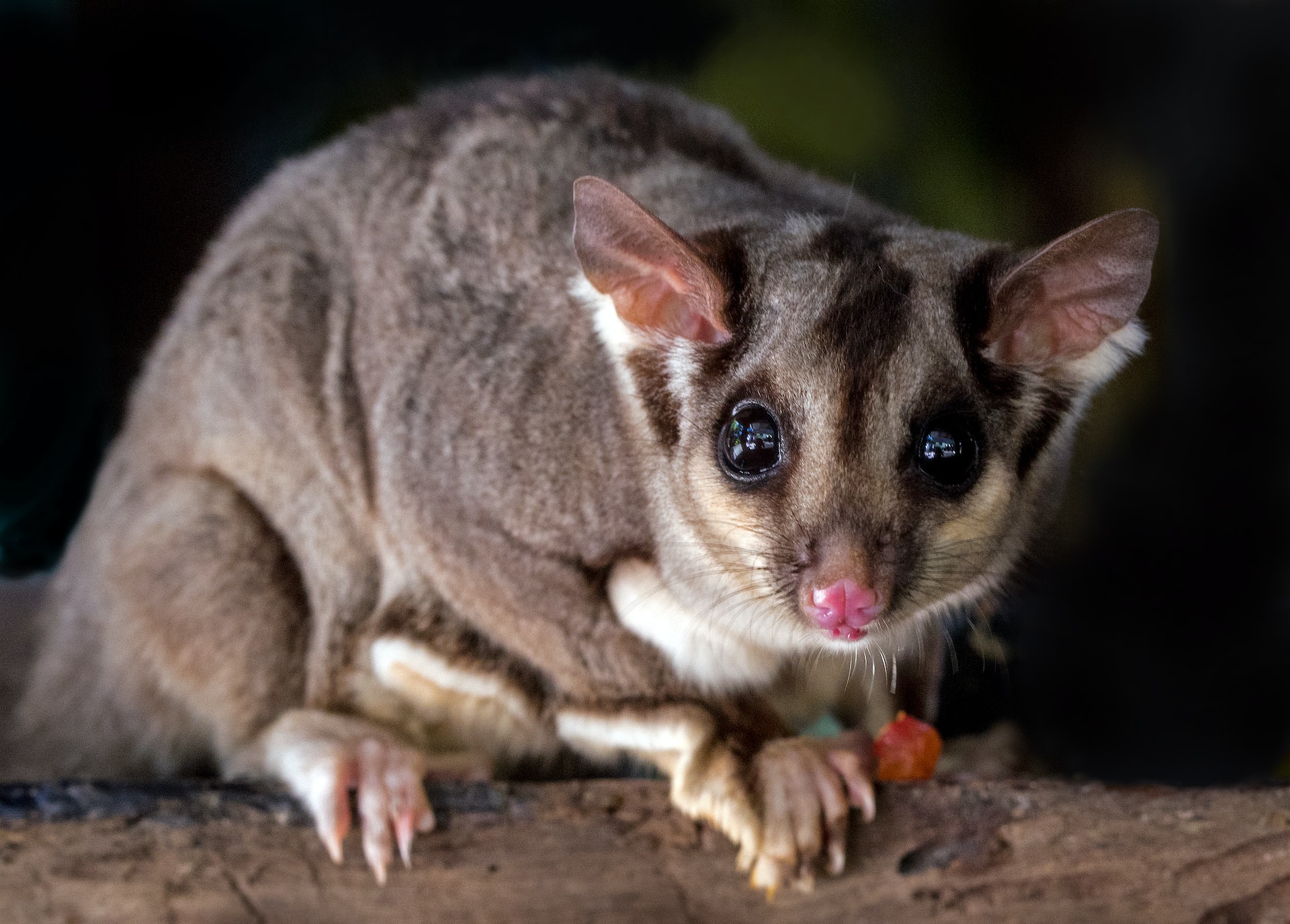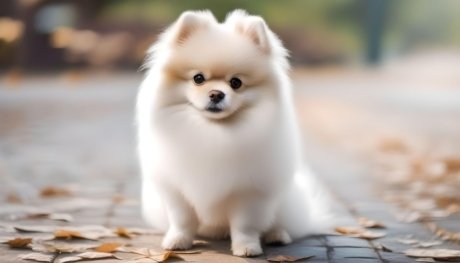Sugar Glider Price In India -2023 | Care Tips, Food, Health
Want to get a Sugar Glider in India but are unsure about the price? Look nowhere else! We will examine the current Sugar Glider price in India and every factor that affects it in this article. We will break down the facts and provide useful insights to help you decide whether to bring one of these lovely marsupials into your family, from the initial purchase price to ongoing costs. Read on to learn all you need to know about Sugar Glider prices in India, whether you’re a seasoned animal lover or a first-time pet owner.
Sugar Glider Price In India
In India, the price of a Sugar Glider varies depending on several factors, including the breeder, location, age, and gender of the animal. On average, the initial cost of purchasing a Sugar Glider can range from Rs. 8,000 to Rs. 15,000, with ongoing expenses for food, veterinary care, and supplies. It’s important to research thoroughly and consider all the costs involved before committing to owning a Sugar Glider in India.
Sugar Glider Baby Price In India
The price of a baby Sugar Glider in India can vary depending on the breeder and location. On average, a baby Sugar Glider can cost between Rs. 5,000 to Rs. 10,000. It’s essential to research the breeder and ensure that the animal is healthy and has been ethically raised before making a purchase. Additionally, ongoing expenses for food, supplies and veterinary care should also be considered before committing to owning a Sugar Glider.

Sugar Glider Prices In Major Indian Cities
The price of Sugar Gliders in major Indian cities varies depending on factors such as location, breeder, age, and gender of the animal. Here are some approximate price ranges for Sugar Gliders in major cities:
| Sugar Glider Price List India | |
|---|---|
| Different Locations | Prices- |
| Sugar Glider Price in Delhi | Rs. 8,000 to Rs. 13,500 |
| Sugar Glider Price in Kolkata | Rs. 6,000 to Rs. 12,000 |
| Sugar Glider Price in Mumbai | Rs. 8,000 to Rs. 15,000 |
| Sugar Glider Price in Agra | Rs. 7,000 to Rs. 13,000 |
| Sugar Glider Price in Chennai | Rs. 8,000 to Rs. 14,000 |
| Sugar Glider Price in Pune | Rs. 8,500 to Rs. 15,000 |
| Sugar Glider Price in Bangalore | Rs. 7,000 to Rs. 14,000 |
| Sugar Glider Prices in Hyderabad | Rs. 6,000 to Rs. 12,000 |
Factors that Affect the price of Sugar Gliders
Knowing what affects a Sugar Glider’s pricing is important if you’re thinking about purchasing one. Age, gender, breed, and lineage of the animal are some of the important elements that influence Sugar Glider costs, along with the reputation and location of the breeder. The local market’s supply and demand might also affect the price.
Sugar Glider price comparison:
It’s generally a good idea to check pricing from different breeders before purchasing a Sugar Glider. While you could be tempted to choose the least expensive alternative, it’s crucial to take into account the level of care and breeding standards each breeder offers. Even though a respected breeder may charge more, they are more likely to provide you a healthy, well-mannered animal.
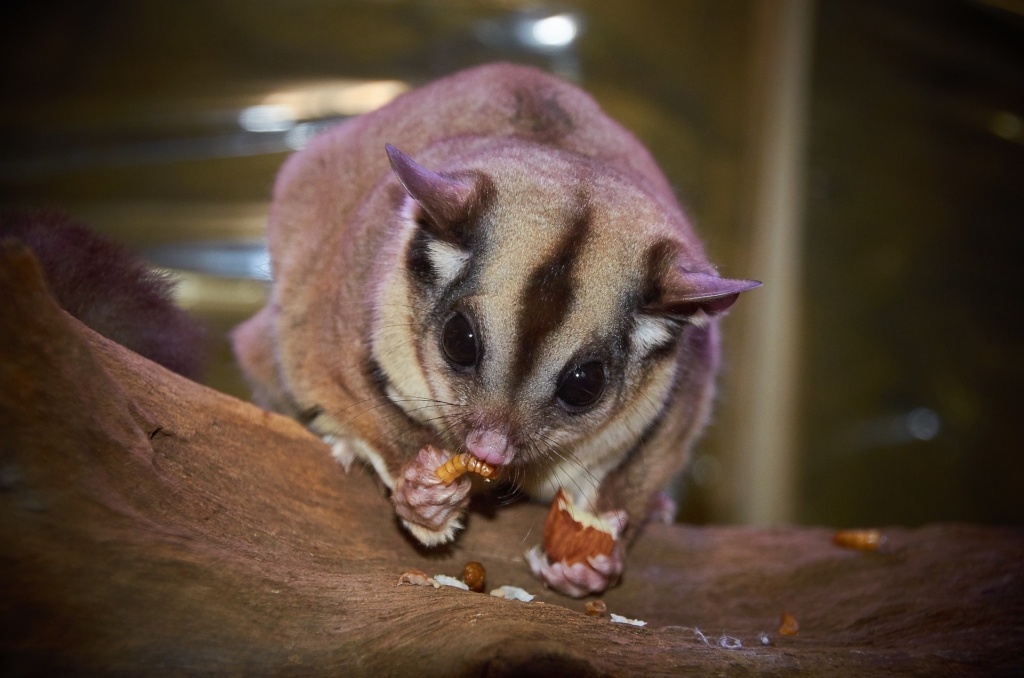
How to negotiate the price of Sugar Glider:
Be respectful and reasonable while negotiating over the cost of a Sugar Glider. Do your research and discover the market price of the animal you are interested in first. Next, make a fair offer to the breeder, including for any potential supplemental costs like veterinary care and supplies. Keep in mind that a breeder is more likely to compromise with someone who shows a genuine interest in giving their animals a loving and responsible home.
The true cost of owning a Sugar Glider:
Although buying a Sugar Glider may not be very expensive up front, it’s essential that you consider the continuous expenses associated with ownership. They include the price of food, supplies, veterinary care, as well as any potential unexpected costs that could arise. Planning for these costs is essential if you want to be able to give your Sugar Glider a safe and enjoyable environment.
Sugar Glider
Little, nocturnal marsupials known as sugar gliders are indigenous to Australia, Indonesia, and Papua New Guinea. They are beloved pets because of their gorgeous looks and funny, sociable personalities. Since they enjoy sweet meals and can glide through the air by utilising the skin flaps between their legs, sugar gliders get their name. They have a lifetime of 10 to 15 years and need a special diet, lots of physical activity, and routine veterinarian care. Before introducing a Sugar Glider into your house, it’s important to conduct comprehensive research to make sure you can provide them with a safe and healthy environment.
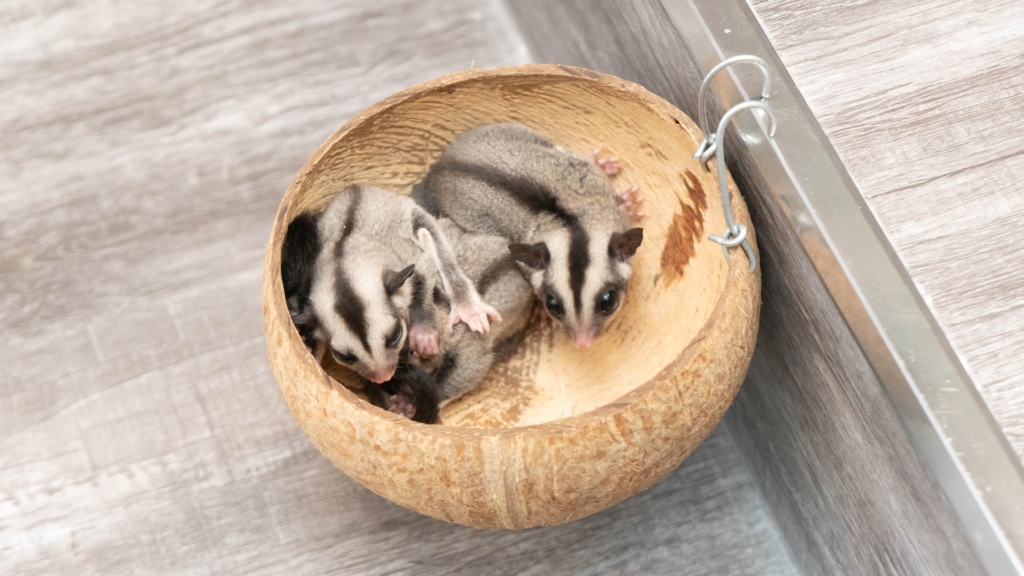
Baby Sugar Glider
Baby Sugar Gliders are incredibly cute and playful. They are also known as joeys and are born after a gestation period of around 16-21 days. Joeys are born underdeveloped and spend their first few months developing inside their mother’s pouch. They emerge from the pouch after around two months and become more active and curious. It’s important to provide baby Sugar Gliders with proper nutrition and socialization to ensure that they grow up healthy and well-adjusted. If you’re interested in getting a baby Sugar Glider as a pet, make sure to find a reputable breeder who follows ethical and responsible breeding practices.
Types of Sugar Gliders
There are three recognized species of Sugar Gliders:
1. Common Sugar Glider (Petaurus breviceps):
This is the most commonly kept species of Sugar Glider. They are typically grey in color and have a black stripe running down their back. They are native to Australia and Indonesia.
2. Mahogany Glider (Petaurus gracilis):
This species of Sugar Glider is native to northeastern Australia. They have a reddish-brown coat and are slightly smaller than the Common Sugar Glider.
3. Squirrel Glider (Petaurus norfolcensis):
This species of Sugar Glider is native to Australia. They are larger than the Common Sugar Glider and have a grey-brown coat with a white belly. They are known for their excellent gliding abilities and can glide for up to 50 meters in a single glide.
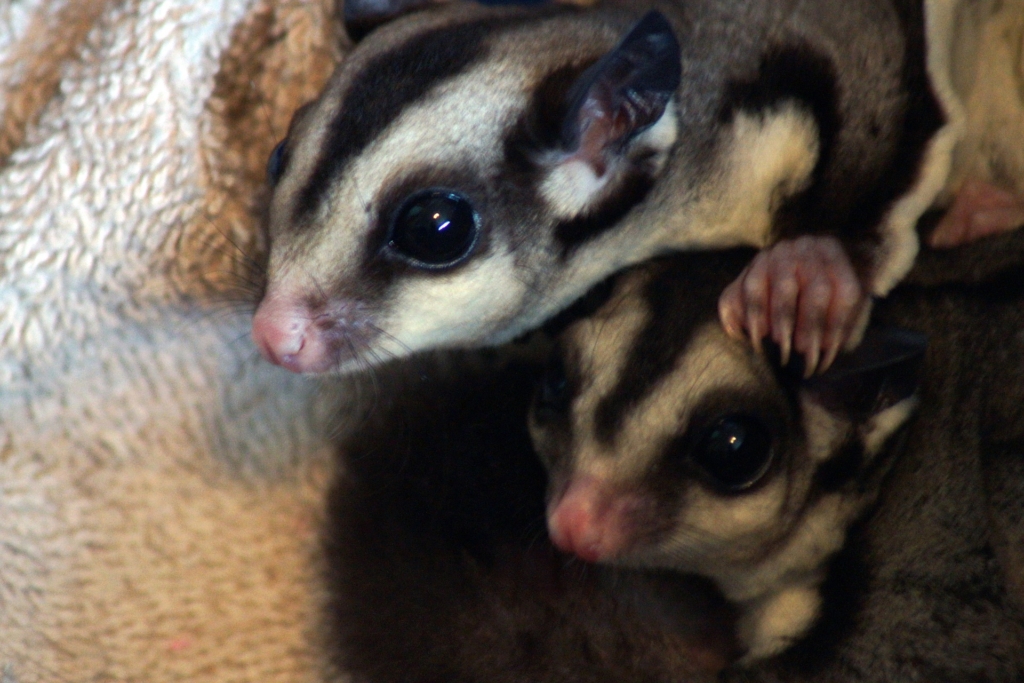
Pros and Cons of Buying a Sugar Glider
It’s important to carefully consider both the pros and cons of buying a Sugar Glider before bringing one into your home:
| Pros of Buying a Sugar Glider | Cons of Buying a Sugar Glider |
|---|---|
| Adorable and playful pets | Require specialized care and diet |
| Bond closely with their owners | Can be noisy at night |
| Live for 10-15 years | Require a lot of socialization |
| Are relatively low maintenance | Can be expensive to purchase |
| Have a unique ability to glide through the air | Can be difficult to find a reputable breeder |
History of Sugar Glider
Sugar Gliders have a fascinating history that dates back to their native Australia, Indonesia, and Papua New Guinea. These charming animals have been known to the native inhabitants of these areas for numerous years, and they frequently kept them as pets or used their flesh and fur for food. Sugar Gliders were initially brought to the United States as exotic pets in the early 1900s, and they immediately became well-liked owing to their distinctive look and cheerful personality.
The appearance of Sugar Glider
Sugar Gliders are small, furry marsupials that are known for their big, round eyes, fluffy tail, and flaps of skin that allow them to glide through the air. They have a grey-brown coat with a black stripe running down their back and a white belly. They are about the size of a small squirrel, with a body length of around 6-8 inches and a tail length of around 6-8 inches as well.
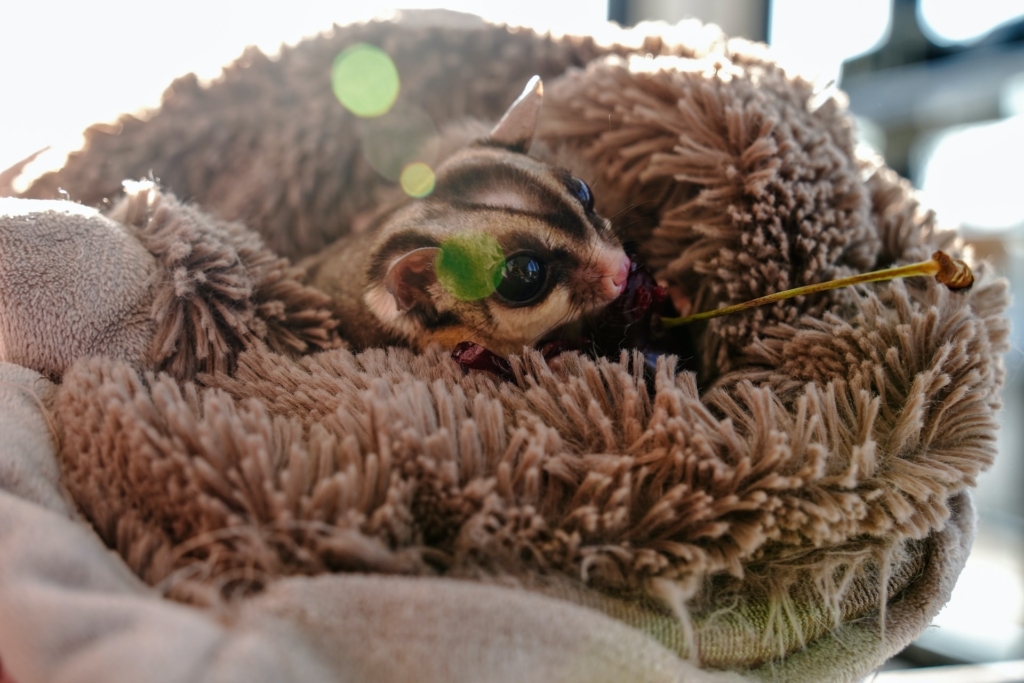
The temperament of Sugar Glider
Sugar Gliders are highly social creatures that bond closely with their owners. They are known for their playful and energetic nature, and they require plenty of attention and socialization to thrive. They are also intelligent and can be trained to do tricks or to use a litter box. However, they are nocturnal animals and can be quite active and noisy at night, which may not be suitable for all owners.
The behaviour of Sugar Glider
Sugar Gliders are unique animals with a number of fascinating behaviours. They are arboreal animals who spend most of their time in trees, moving from branch to branch utilising their gliding abilities. Also, they have a history of being able to engage with people and their owners through a number of voices and body language. Furthermore, Sugar Gliders have a unique diet that necessitates a combination of proteins, fruits, and vegetables, and they need a lot of movement to keep healthy.
10 Facts about Sugar Gliders
Here are some interesting facts about Sugar Gliders, must check them before buying it:
- Sugar Gliders are small marsupials that are native to Australia, Indonesia, and Papua New Guinea.
- They are social creatures that bond closely with their owners and require plenty of attention and socialization to thrive.
- Sugar Gliders are nocturnal animals and can be quite active and noisy at night.
- They have a unique ability to glide through the air, using flaps of skin between their front and back legs.
- Sugar Gliders have a specialized diet that requires a balance of proteins, fruits, and vegetables.
- They are known for their communication, using a range of vocalizations and body language to interact with each other and their owners.
- Sugar Gliders have a lifespan of 10-15 years in captivity.
- There are three recognized species of Sugar Gliders, but most pets are of the Common Sugar Glider species.
- Sugar Gliders are illegal to own in some states and countries, so it’s important to check local regulations before getting one as a pet.
- They require a significant amount of time, effort, and financial resources to ensure that they are healthy and well-cared for.
Video Credit: Brave Wilderness
Care Tips for Sugar Gliders
Knowing how to care for a Sugar Glider is important if you’re thinking of getting one as a pet. For your Sugar Glider’s ongoing good health and joy, consider the following guidance:
- A particular diet for sugar gliders is necessary, and it should include a range of proteins, fruits, and vegetables. You may also use a top-notch commercial diet, but it has to be supplemented with fresh meals.
- For their health and happiness, sugar gliders need a lot of activity and enrichment. Climbing, playing, and exploring their surroundings should all be opportunities they should have a lot of.
- To protect your Sugar Glider, make sure its home is both sanitary and secure. This includes a safe cage with lots of areas to walk about, tidy bedding, and a tonne of toys and climbing frames.
- Because they are sociable animals, sugar gliders need a lot of care and interaction to flourish. They should have lots of time to spend with their owners and other Sugar Gliders outside of their cage.
- To keep your Sugar Glider healthy, routine veterinary exams are necessary. They should have routine examinations for parasites, dental disorders, and other health issues.
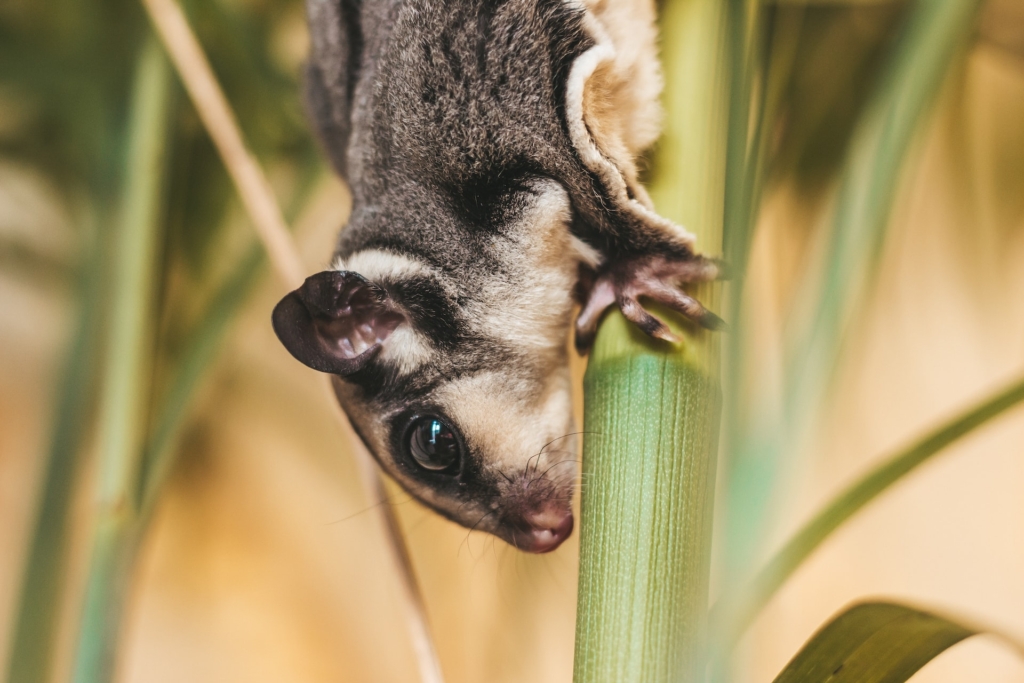
Health Issues of Sugar Gliders
While Sugar Gliders are generally healthy animals, there are some health issues that owners should be aware of. These include:
- Dental problems, which can occur if their diet is not balanced or they don’t have access to proper chewing materials.
- Obesity, which can occur if they are fed a diet that is too high in fat or sugar.
- Parasites, including mites and fleas.
- Stress-related health problems, which can occur if they are not given enough attention or socialization.
Owners should be aware of these health issues and take steps to prevent them from occurring.
Sugar Glider Lifespan
The lifespan of a Sugar Glider in captivity can vary depending on several factors, including diet, environment, and genetics. Generally, Sugar Gliders can live for 10-15 years in captivity with proper care. However, some Sugar Gliders have been known to live for up to 20 years.
Food for Sugar Gliders
When it comes to feeding your Sugar Glider, it’s important to provide a balanced diet that meets their nutritional needs. Here are some common foods that Sugar Gliders can eat:
| Food Type | Examples |
|---|---|
| Protein | Cooked chicken, cooked eggs, mealworms, crickets, and other insects |
| Fruits | Apples, bananas, grapes, kiwi, papaya, and other fruits |
| Vegetables | Carrots, sweet potatoes, kale, spinach, and other vegetables |
| Nectar | Commercially-prepared nectar or a homemade mixture of honey, water, and baby food |
| Commercial Diet | High-quality commercial diets formulated specifically for Sugar Gliders |
Names for Sugar Gliders
Sugar Gliders are popular pets and many owners like to give them unique and fitting names. Here are some popular names for Sugar Gliders:
- Gizmo
- Peanut
- Luna
- Oreo
- Mango
- Honey
- Simba
- Pippin
- Taz
- Biscuit
Sugar Glider Video
Video of Sugar Glider to let you understand Sugar Glider care tips, food, lifespan, and other factors. Video Credit: Petopedia
Conclusion on Sugar Glider Price In India:
In summary, Sugar Gliders are unique and fascinating pets that need particular upkeep and care. Understanding a Sugar Glider’s requirements and ownership responsibilities is important before purchasing one. For those who are prepared to put in the work, Sugar Gliders may make fantastic companions despite the fact that they can be quite expensive. The cost of sugar gliders in India varies according to a number of variables, including breeder, location, and age. Prospective owners can find a healthy, well-cared-for Sugar Glider that fits their budget by doing some research and comparing prices.
Frequently Asked Questions on Sugar Glider Price In India:
-
What is a Sugar Glider?
A Sugar Glider is a small marsupial native to Australia and Indonesia that has become popular as a pet due to its playful and social nature.
-
How long do Sugar Gliders live?
Sugar Gliders have an average lifespan of 10-15 years in captivity when given proper care and nutrition.
-
What do Sugar Gliders eat?
Sugar Gliders require a balanced diet of protein, fruits, vegetables, and nectar. They can also eat high-quality commercial diets formulated specifically for Sugar Gliders.
-
Do Sugar Gliders make good pets?
Sugar Gliders can make great pets for those who are willing to put in the effort to provide proper care and attention. They are playful, social, and form strong bonds with their owners.
-
How much do Sugar Gliders cost?
The price of Sugar Gliders varies depending on several factors such as location, age, and breeder. In India, the average price for a Sugar Glider can range from Rs. 5,000 to Rs. 15,000.
-
Do Sugar Gliders need a lot of space?
While Sugar Gliders are small, they do require a fair amount of space to play and exercise. A large, multi-level cage with plenty of toys and perches is ideal for Sugar Gliders.
-
Can Sugar Gliders be trained?
Yes, Sugar Gliders can be trained with patience and positive reinforcement. They can learn to do tricks and even use a litter box.
-
What are some common health issues for Sugar Gliders?
Malnutrition, infections, and dental disorders are just a few of the health concerns that Sugar Gliders are susceptible to. To keep your Sugar Glider healthy, it’s essential to offer regular nourishment and veterinarian treatment.
-
Are Sugar Gliders legal as pets in India?
Yes, Sugar Gliders are legal to own as pets in India. However, it’s important to check with your local authorities to ensure that there are no specific regulations or restrictions in your area.
-
Do Sugar Gliders need a companion?
Sugar Gliders are social animals and thrive in pairs or small groups. It’s recommended to keep at least two Sugar Gliders together to provide them with the social interaction they need.
Recommended –
Pocket Dog Price in India (Mar 2023) | Food, Care Tips, Training, Lifespan
Bulldog price in India, USA, Uk (Mar 2023) | Everything about French bulldogs




